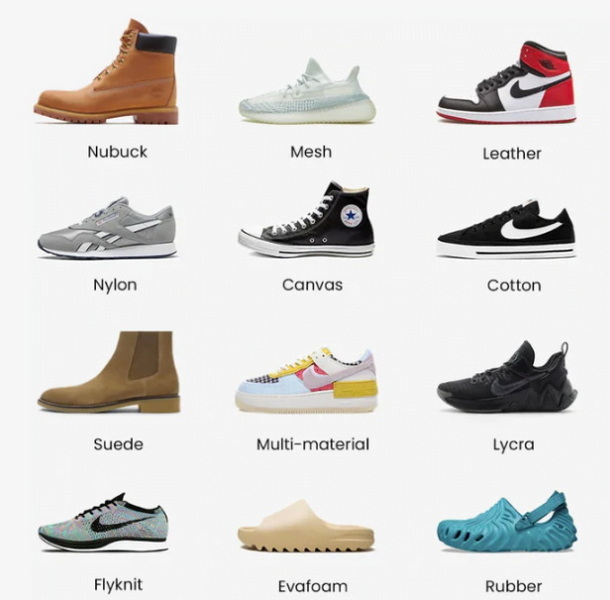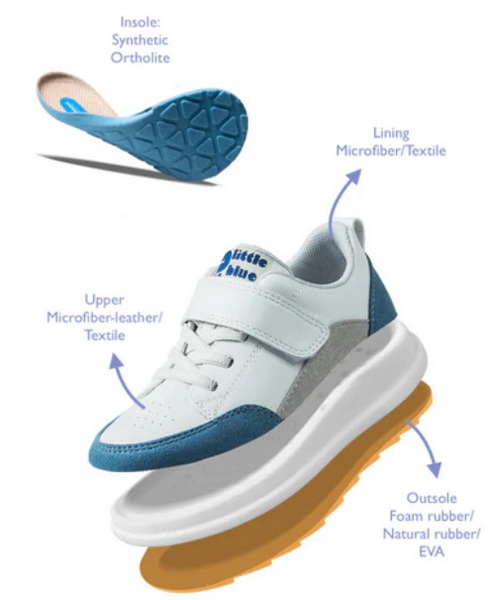Content Menu
● Understanding Shoe Sizes and Widths
>> Shoe Width Categories
● Anatomical Differences Between Men's and Women's Feet
● Why Are Men's Shoes Generally Wider?
● Shoe Design Considerations
● The Role of Shoe Materials
● Practical Implications When Buying Shoes
● The Importance of Foot Health
● Common Types of Shoes by Gender
>> Men's Shoe Types
>> Women's Shoe Types
● Conclusion
● FAQs
>> 1. What is the main difference between men's and women's shoe sizes?
>> 2. Are all men's shoes wider than women's?
>> 3. How should I convert my shoe size from men's to women's?
>> 4. Do all brands follow the same sizing guidelines?
>> 5. Can I wear men's shoes if I usually wear women's?
● Citations:
When it comes to footwear, understanding the differences between men's and women's shoes is crucial for finding the right fit. One of the most significant distinctions is width. In general, men's shoes are wider than women's shoes, but this difference can vary based on individual foot shapes and specific shoe designs. This article will explore the anatomical and design factors that contribute to these differences, helping you make informed decisions when purchasing shoes.

Understanding Shoe Sizes and Widths
Shoe sizes are not universally standardized, which can lead to confusion when shopping. In the U.S., men's and women's shoes follow different sizing systems. Typically, a men's shoe size is about 1.5 sizes larger than a women's shoe size. For example, a men's size 8 corresponds to a women's size 9.5.
Shoe Width Categories
- Men's Widths: The standard width for men is D, with C being narrow and E or EE indicating wide options.
- Women's Widths: The standard width for women is B (medium), with A being narrow and C/D indicating wide options.
This difference in width designations means that while a men's shoe may be labeled as medium (D), a women's medium (B) will generally be narrower.
Anatomical Differences Between Men's and Women's Feet
Research shows that men's and women's feet exhibit distinct anatomical differences beyond just size.
- Width: Men's feet tend to be wider overall compared to women's feet. This is particularly noticeable in the forefoot area.
- Shape: Women typically have a narrower heel but a wider forefoot relative to their heel size. This anatomical structure influences how shoes are designed for each gender.
- Foot Length: On average, men have longer feet than women, which contributes to the overall larger dimensions of men's shoes.
Why Are Men's Shoes Generally Wider?
The primary reason for the width difference lies in average foot anatomy. Studies indicate that men have larger foot dimensions across various metrics, including:
- Forefoot Width: Men generally have wider forefeet than women.
- Heel Width: While women may have narrower heels, men's heels are typically broader, contributing to the overall width of the shoe.
These anatomical differences necessitate variations in shoe design to provide comfort and support during activities such as walking or running.
Shoe Design Considerations
Manufacturers design shoes with these anatomical differences in mind. Here are some factors that influence how men's and women's shoes are constructed:
- Last Shape: The "last" is the mold used to shape the shoe. Men's lasts are generally wider and have a different contour compared to women's lasts.
- Material Flexibility: Women's shoes often use materials that allow for more flexibility in certain areas, accommodating their foot shape better.
- Cushioning and Support: Due to differences in weight distribution and biomechanics, men's shoes often feature denser cushioning materials compared to women's shoes.

The Role of Shoe Materials
The materials used in shoe construction also play a significant role in how they fit and feel on the foot. Here are some common materials used in men's and women's shoes:
- Leather: Known for its durability and breathability, leather is often used in both men's and women's dress shoes. High-quality leather can conform to the shape of your foot over time but may require maintenance.
- Synthetic Materials: These materials are designed to mimic leather but are often lighter and less expensive. They can provide good flexibility but might not offer the same level of comfort as genuine leather.
- Textiles: Shoes made from textiles like canvas or mesh are popular for casual wear. They tend to be breathable but may lack support compared to leather or synthetic options.
- Rubber: Commonly used for soles, rubber provides excellent traction and durability but can be heavy if used extensively in the upper part of the shoe.
Practical Implications When Buying Shoes
When shopping for shoes, it's essential to consider these differences:
1. Fit: If you have wider feet, you may find men's shoes more comfortable even if you typically wear women's sizes.
2. Size Conversion: Remember that converting sizes from men's to women's typically involves subtracting 1.5 sizes (e.g., a men's 10 is roughly equivalent to a women's 11.5).
3. Trying Shoes On: Always try on both men's and women's styles if you can; personal comfort can vary significantly regardless of general guidelines.
4. Specialty Sizes: Some brands offer unisex options or specialized widths that cater to those who may not fit neatly into traditional categories.
The Importance of Foot Health
Choosing the right footwear is crucial not only for comfort but also for maintaining good foot health. Poorly fitting shoes can lead to various problems such as bunions, plantar fasciitis, and other foot-related issues. Here are some tips for selecting healthy footwear:
- Arch Support: Look for shoes with good arch support to help distribute weight evenly across your feet.
- Toe Box Space: Ensure there is enough room in the toe box so your toes can move freely without being cramped.
- Heel Height: Opt for lower heels when possible; high heels can alter your posture and lead to discomfort over time.
- Flexibility: Shoes should allow your toes to flex naturally while still providing adequate support.
Common Types of Shoes by Gender
Understanding the types of shoes available can also help you make informed choices based on your needs:
Men's Shoe Types
- Dress Shoes: Oxfords, Brogues, Loafers
- Casual Shoes: Sneakers, Slip-ons
- Boots: Chukka boots, Chelsea boots
- Athletic Shoes: Running shoes, Cross-trainers
Women's Shoe Types
- Dress Shoes: Heels (pumps), Flats
- Casual Shoes: Sneakers, Ankle boots
- Sandals: Gladiators, Flip-flops
- Athletic Shoes: Running shoes, Walking shoes
Each type serves different purposes and occasions, so it's essential to choose wisely based on what you need them for.
Conclusion
In summary, men's shoes are generally wider than women's due to anatomical differences in foot shape and size. Understanding these distinctions can help you choose the right footwear for your needs, ensuring comfort and support whether you're shopping for athletic shoes or everyday wear.
When purchasing shoes, always consider trying on different styles and widths to find what works best for your unique foot shape. Prioritizing fit over brand or style will lead to better long-term satisfaction with your footwear choices.

FAQs
1. What is the main difference between men's and women's shoe sizes?
The primary difference lies in sizing systems; men's sizes are typically 1.5 sizes larger than women's for equivalent lengths.
2. Are all men's shoes wider than women's?
Generally speaking, yes; however, individual foot shapes vary widely, so some women may find men's styles more comfortable if they have wider feet.
3. How should I convert my shoe size from men's to women's?
To convert from men's shoe sizes to women's, subtract approximately 1.5 sizes (e.g., a men's size 8 equals a women's size 9.5).
4. Do all brands follow the same sizing guidelines?
No, sizing can vary by brand; it's always best to check specific brand size charts for accurate fitting information.
5. Can I wear men's shoes if I usually wear women's?
Yes! If you find that men's styles fit better due to width or comfort preferences, feel free to try them on.
Citations:
[1] https://arnoconti.com/blogs/arnoconti/shoe-material-101-common-shoe-materials-you-should-know
[2] https://travel.earth/types-of-shoes/amp/
[3] https://www.tcfootandankle.com/blog/why-your-shoe-choice-is-so-important-for-your-foot-health
[4] https://shoemakersacademy.com/select-footwear-materials/
[5] https://www.saintg.in/blogs/posts/different-types-of-shoes-for-men-and-women
[6] https://forbesfootwear.com.au/blogs/news/the-impact-of-shoes-on-posture-and-foot-health
[7] https://gabarain.es/find-out-what-properties-each-material-of-the-footwear/
[8] https://thenobledandy.com/blog/mens-style/15-most-popular-types-of-classic-mens-shoes/
[9] https://pmc.ncbi.nlm.nih.gov/articles/PMC9648311/
[10] https://kizik.com/blogs/news/type-of-shoe-material

















